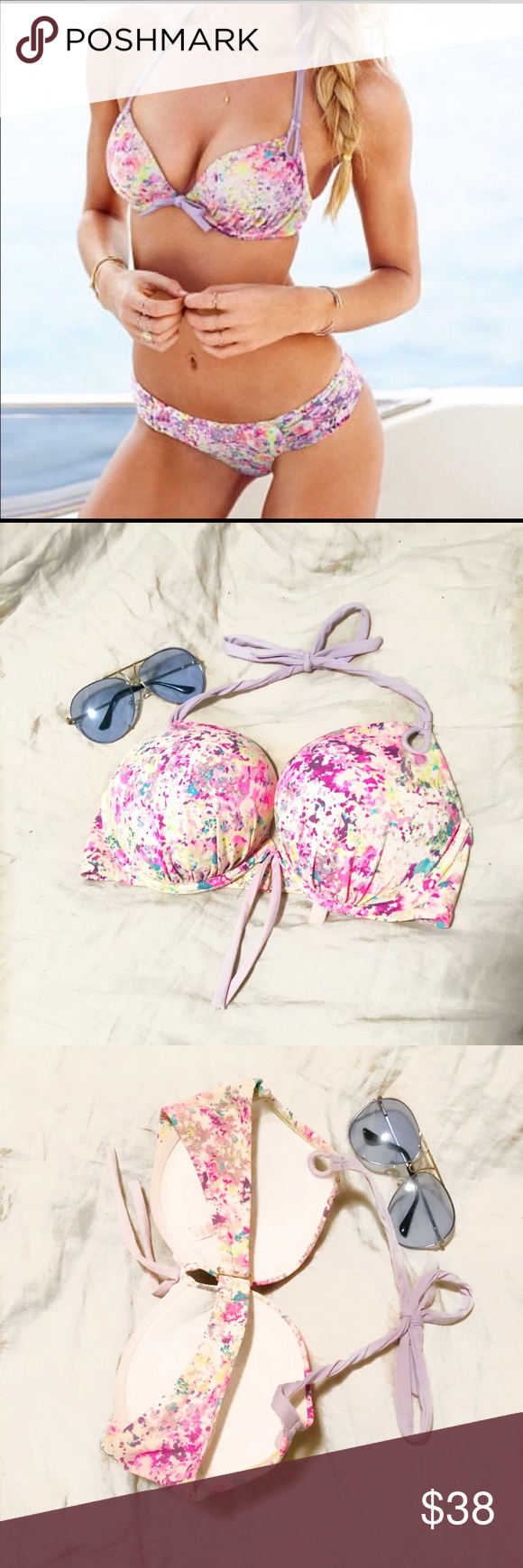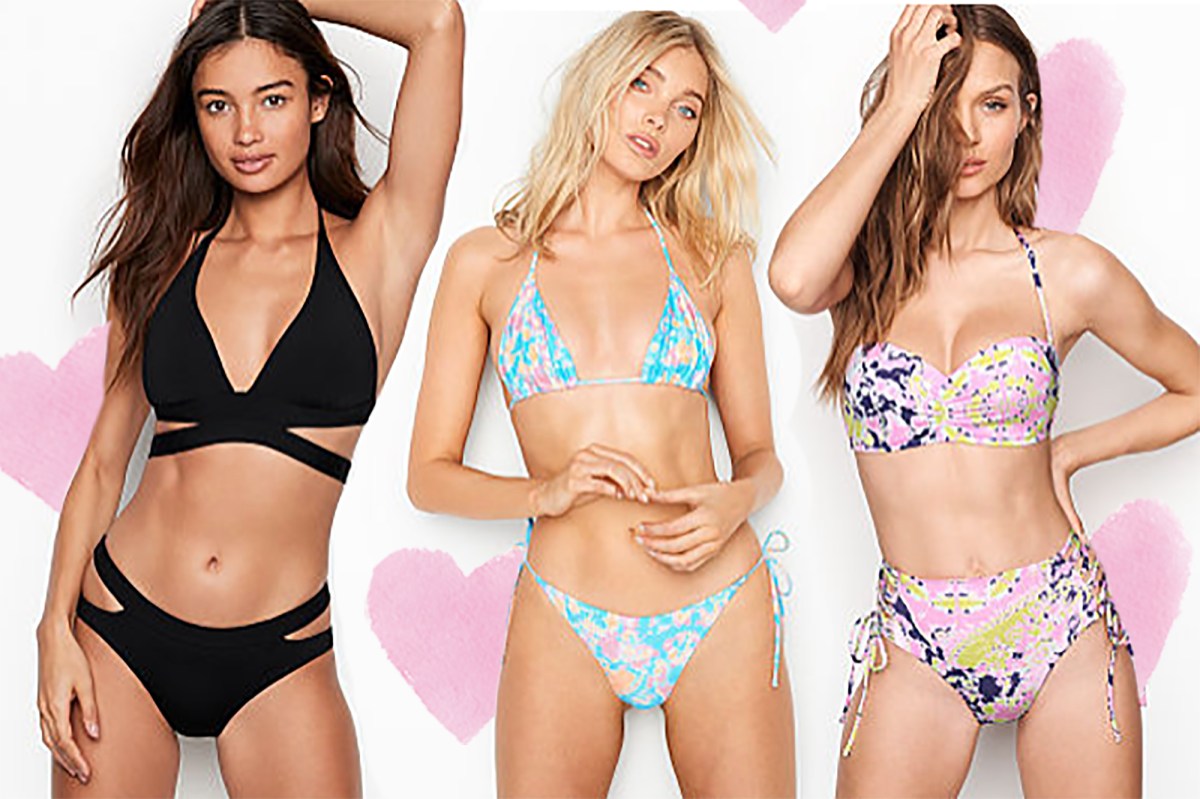Content Menu
● The Golden Era of Victoria's Secret Swimwear
● The Decision to Discontinue: A Strategic Move
>> Focusing on Core Competencies
>> Declining Profitability in the Swim Segment
>> Changing Consumer Preferences
>> Operational Streamlining
>> Reallocation of Resources
● The Impact of the Decision
● The Changing Landscape of the Swimwear Industry
● The Return of Victoria's Secret Swimwear
● The New Victoria's Secret Swim
● Video: Victoria's Secret Fashion Show Return Announcement
● Lessons Learned and Future Outlook
● Conclusion
● Frequently Asked Questions
Victoria's Secret, a name synonymous with lingerie and feminine allure, has long been a dominant force in the fashion industry. For years, the brand's swimwear line was a staple for beach-goers and pool enthusiasts alike. However, in 2016, the company made a shocking announcement that sent ripples through the fashion world: they would discontinue their beloved swimwear line. This decision left many wondering why such a seemingly successful product category would be abandoned. In this article, we'll dive deep into the reasons behind this strategic move, its impact on the company and consumers, and the eventual return of Victoria's Secret swimwear to the market.
The Golden Era of Victoria's Secret Swimwear
Before we explore the reasons for discontinuation, let's take a moment to appreciate the glory days of Victoria's Secret swimwear. The brand's swim line was known for its sexy, fashion-forward designs that made women feel confident and beautiful at the beach or by the pool.

Victoria's Secret swimwear was more than just bikinis and one-pieces; it was a lifestyle. The annual swim catalogs were eagerly anticipated, featuring top models in exotic locations, showcasing the latest trends in beach fashion. These catalogs didn't just sell swimsuits; they sold a dream – a vision of the perfect beach vacation, complete with the perfect swimwear.
The Decision to Discontinue: A Strategic Move
In 2016, L Brands, the parent company of Victoria's Secret, made the surprising announcement that they would be exiting the swimwear market. This decision was part of a larger restructuring plan aimed at streamlining the company's operations and focusing on its core strengths. But why would a company choose to abandon such a seemingly popular product line?
Focusing on Core Competencies
One of the primary reasons for discontinuing the swim line was to allow Victoria's Secret to focus on its core competencies – primarily lingerie and beauty products. By narrowing its focus, the company hoped to strengthen its position in these key areas and improve overall profitability.
Declining Profitability in the Swim Segment
While swimwear had been a significant part of Victoria's Secret's offerings, the segment had been experiencing declining profitability in the years leading up to the decision. The swimwear market is highly competitive and seasonal, making it challenging to maintain consistent profits throughout the year.
Changing Consumer Preferences
The fashion industry is notoriously fickle, with trends changing rapidly. Victoria's Secret faced increasing competition from smaller, more nimble brands that were better able to adapt to changing consumer preferences. Many consumers were gravitating towards more diverse and inclusive swimwear options, which didn't align with Victoria's Secret's traditional image.
Operational Streamlining
By eliminating the swimwear line, Victoria's Secret could simplify its supply chain and inventory management processes. This streamlining was expected to lead to cost savings and improved operational efficiency.
Reallocation of Resources
The decision to exit the swim market allowed Victoria's Secret to reallocate resources – both financial and creative – to other areas of the business that were deemed more promising for long-term growth.
The Impact of the Decision
The discontinuation of Victoria's Secret swimwear had far-reaching effects on both the company and its customers.
For the Company:
◆ Initial Financial Hit: The decision to exit the swim market resulted in a short-term financial impact, as the company had to clear out existing inventory and absorb the costs associated with discontinuing the line.
◆ Streamlined Operations: Over time, the company saw benefits in terms of simplified operations and a more focused business strategy.
◆ Brand Perception: Some loyal customers felt disappointed and betrayed by the decision, potentially impacting overall brand loyalty.
For the Customers:
◆ Loss of a Favorite Brand: Many loyal Victoria's Secret swimwear customers were left scrambling to find alternative brands that offered similar styles and quality.
◆ Shift in Shopping Habits: Consumers had to explore other retailers for their swimwear needs, potentially discovering new favorite brands in the process.
◆ Nostalgia Factor: The discontinuation created a sense of nostalgia among long-time customers, with some holding onto their Victoria's Secret swimwear as cherished items.

The Changing Landscape of the Swimwear Industry
In the years following Victoria's Secret's exit from the swim market, the industry underwent significant changes:
1. Rise of Inclusive Sizing: Many brands began offering a wider range of sizes to cater to diverse body types, a trend that Victoria's Secret had been slow to adopt.
2. Sustainability Focus: Eco-friendly swimwear made from recycled materials gained popularity, reflecting growing consumer concern for environmental issues.
3. Direct-to-Consumer Brands: Online-only swimwear brands emerged, offering personalized shopping experiences and often more competitive pricing.
4. Athleisure Influence: The lines between activewear and swimwear blurred, with many consumers seeking versatile pieces that could transition from beach to street.
5. Social Media Impact: Instagram and other social platforms became powerful marketing tools for swimwear brands, allowing smaller companies to gain significant market share through influencer partnerships and user-generated content.
The Return of Victoria's Secret Swimwear
In a surprising turn of events, Victoria's Secret announced the return of its swimwear line in 2019. This decision came after the brand had faced several challenging years, including declining sales and criticism over its marketing approach.

The reasons for bringing back the swim line included:
1. Customer Demand: Many loyal customers had been vocal about their desire for Victoria's Secret to return to the swimwear market.
2. New Leadership: Changes in the company's leadership brought fresh perspectives and a willingness to revisit past decisions.
3. Evolving Brand Image: Victoria's Secret began efforts to rebrand itself as more inclusive and diverse, and the return of swimwear was part of this broader strategy.
4. Market Opportunity: The company identified untapped potential in the swimwear market, especially with its existing customer base.
5. Improved Business Model: Victoria's Secret returned to swimwear with a more streamlined approach, initially offering the line exclusively online to test the waters before a broader rollout.
The New Victoria's Secret Swim
The reintroduced swimwear line came with some notable changes:
1. Expanded Size Range: Recognizing the demand for inclusive sizing, the new swim line offered a broader range of sizes to cater to more body types.
2. Updated Styles: While maintaining some of the sexy aesthetic Victoria's Secret was known for, the new line also included more diverse styles to appeal to a wider audience.
3. Sustainability Efforts: In line with industry trends, some pieces in the new swim collection incorporated sustainable materials.
4. Digital-First Approach: The initial relaunch focused on online sales, allowing the company to gauge demand and gather customer feedback before expanding to physical stores.
5. Collaborative Collections: Victoria's Secret partnered with other brands and designers to create unique, limited-edition swimwear collections, generating buzz and attracting new customers.
Video: Victoria's Secret Fashion Show Return Announcement
To further illustrate the brand's evolution and the excitement surrounding the return of Victoria's Secret swimwear, let's take a look at this video announcing the return of the iconic Victoria's Secret Fashion Show:
This video showcases the brand's commitment to reinventing itself while still maintaining the glamour and spectacle that made it famous. The return of the fashion show, along with the reintroduction of swimwear, signals Victoria's Secret's efforts to reclaim its position in the fashion industry while adapting to changing consumer expectations.
Lessons Learned and Future Outlook
The story of Victoria's Secret swimwear offers several valuable lessons for businesses:
1. Adaptability is Key: Companies must be willing to adapt to changing market conditions and consumer preferences, even if it means revisiting past decisions.
2. Listen to Your Customers: The vocal demand from customers played a significant role in bringing back the swim line, highlighting the importance of customer feedback.
3. Brand Evolution: Victoria's Secret's journey demonstrates the need for brands to evolve their image and offerings to stay relevant in a changing social landscape.
4. Strategic Focus vs. Diversification: The initial decision to discontinue swimwear in favor of core products, followed by its reintroduction, illustrates the ongoing challenge of balancing focus with diversification.
5. Digital Transformation: The online-first approach to relaunching swimwear reflects the growing importance of e-commerce and digital strategies in the retail industry.
Looking ahead, the future of Victoria's Secret swimwear appears promising. The brand has shown a willingness to learn from past mistakes and adapt to new market realities. By embracing inclusivity, sustainability, and digital innovation, Victoria's Secret is positioning itself to reclaim its spot as a leader in the swimwear market.
However, challenges remain. The swimwear industry is more competitive than ever, with numerous brands vying for consumer attention. Victoria's Secret will need to continue innovating and listening to its customers to maintain relevance and drive growth in this category.
Conclusion
The discontinuation and subsequent return of Victoria's Secret swimwear is a fascinating case study in business strategy, brand management, and consumer trends. It demonstrates how even industry giants must be willing to make tough decisions and pivot their strategies in response to market forces.
As we look to the future, it's clear that the swimwear industry will continue to evolve. Brands that can balance tradition with innovation, inclusivity with aspiration, and quality with sustainability will be best positioned to succeed. Victoria's Secret's swimwear journey serves as a reminder that in the world of fashion, as in business, the only constant is change.

Frequently Asked Questions
Q: Why did Victoria's Secret originally discontinue its swimwear line?
A: Victoria's Secret discontinued its swimwear line in 2016 as part of a larger restructuring plan. The decision was made to focus on the company's core competencies, primarily lingerie and beauty products, and to streamline operations. Additionally, the swimwear segment had been experiencing declining profitability, and the company faced increasing competition from more agile brands in the swimwear market.
Q: When did Victoria's Secret bring back its swimwear line?
A: Victoria's Secret reintroduced its swimwear line in 2019, approximately three years after discontinuing it. The return was initially launched as an online-only offering before gradually expanding to select physical stores.
Q: How has Victoria's Secret's swimwear line changed since its reintroduction?
A: The reintroduced swimwear line features several changes, including an expanded size range to cater to more body types, updated styles that balance the brand's signature sexy aesthetic with more diverse options, and the incorporation of sustainable materials in some pieces. The company also adopted a digital-first approach for the initial relaunch and has introduced collaborative collections with other brands and designers.
Q: What impact did the discontinuation of swimwear have on Victoria's Secret?
A: The discontinuation initially resulted in a financial hit as the company cleared out inventory and absorbed associated costs. However, it also allowed Victoria's Secret to streamline its operations and focus on core product categories. The decision did impact brand perception among some loyal customers, potentially affecting overall brand loyalty.
Q: How has the swimwear industry changed since Victoria's Secret's initial exit from the market?
A: The swimwear industry has seen several significant changes, including a greater focus on inclusive sizing, increased demand for sustainable and eco-friendly options, the rise of direct-to-consumer online brands, a blending of athleisure and swimwear styles, and the growing influence of social media marketing and influencer partnerships.





































